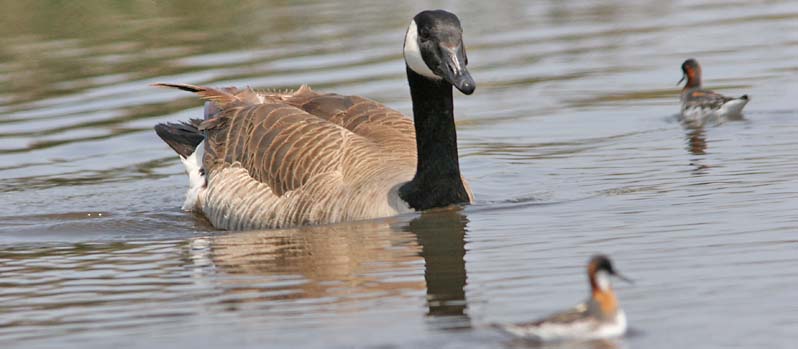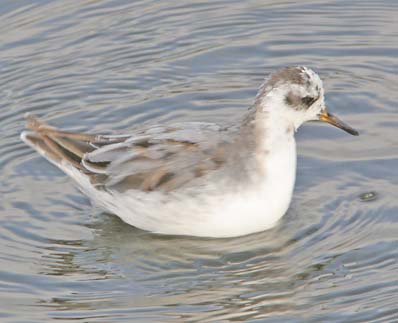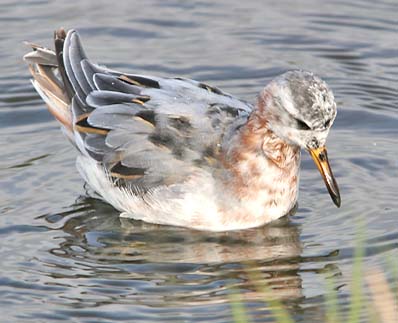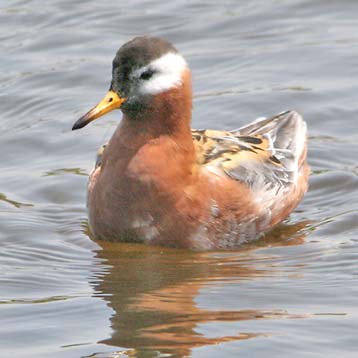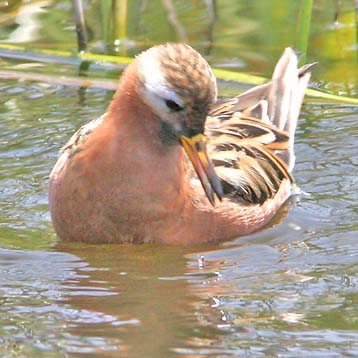| |
|
| Both
Red and Red-necked Phalaropes migrate offshore California in huge
numbers. The Monterey Peninsula can be windy in early May, and some
days hundreds of these migrant pelagic phalaropes are blown onshore.
Once you learn to separate them from a Canada Goose (above), you can
turn your attention to more subtle points. You can marvel, for example,
at the variation in body molt at this date, some some birds still
primarily in basic plumage (below left) while others are starting to
acquire their colorful alternate (=breeding) plumage (below right). |
|
|
| These are, of course, Red Phalaropes Phalaropus fulicaria.
They have comparatively short, thick-based bills; adults in spring show
a variable amount of yellow at the base of the bill. From studying
Paulson (1993), I learned this spring that the sex of adults in
alternate (=breeding) plumage is rather easily determined. You already
know that phalaropes are unique among American shorebirds in that the
female is brighter than the male (and that it is the male that will
rear the young), but distinguishing between the sexes is not simply
evaluating how bright the plumage may be. Rather, females (below left) have a black cap and extensively white cheeks. In contrast, males (below right) have a streaked crown and reduced white cheeks. |
|
|
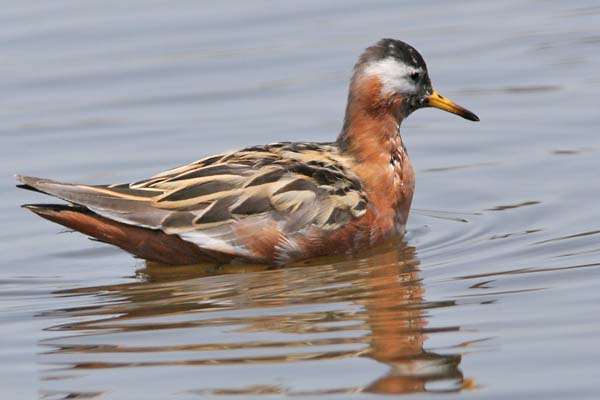 |
The
black crown is probably the easiest point to notice, and it really
contrasts with the white cheeks. There is probably overlap on most of
the other points. However, a female Red Phalarope
(left) averages a deeper red body color; more golden edges to back and
scapulars; and more yellow on the bill. Some females have almost
entirely yellow bills with black tips. |
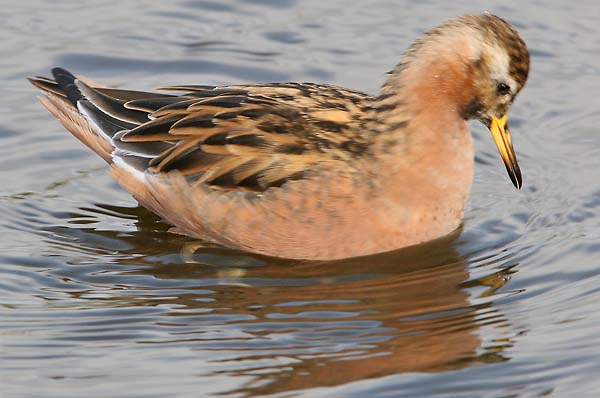 |
A male Red Phalarope
(left) has rusty streaks in a dark brown crown, and usually much
reduced white to the face (like this male in which it is restricted to
supercilium). Note also the tendency to a more brick-red, less bright
red body color; a tendency to rusty edges to the back and scapulars;
and reduced yellow to bill. Some males have a dark bill with just a
yellow ring around the base. All these patterns provide more protective
coloration to males. |
|
| Here on the Monterey Peninsula, Red Phalaropes (above) are typically outnumbered by Red-necked Phalaropes Phalaropus lobatus
(below) by between 10–1 to 3–1. Possibly this is because Reds migrate
farther offshore, so it takes more wind to blow them to on-shore ponds.
Red-necked Phalaropes have thin, all-black bills and a streaked back in
all plumages. On the weekend of 9-10 May [all photos on this page], all
the Red-necks I saw seemed to be in full alternate (=breeding) plumage.
They, too, can be rather easily segregated by sex. |
|
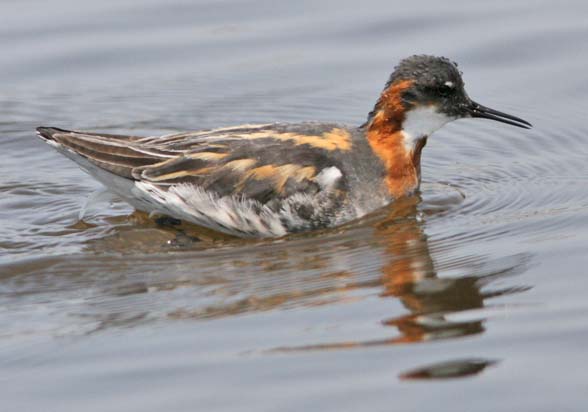 |
The female Red-necked Phalarope (left) has the brighter plumage of the two sexes, but the diagnostic point is the little white upper eyelid on the otherwise dark gray
face. Note also the more extensive red to the neck, touching the white
throat extensively, and the very broad golden stripes on the dark gray
back. |
 |
The male Red-necked Phalarope (left) is more subtle. The diagnostic point to sex this bird is the orangey supercilium that extends forward to the white upper eyelid on a paler gray
head. On some the supercilium is more extensively white in front, but
the male has the supercilium and the female does not. Other points are
the paler tone to the gray on head & neck; the reduced red to neck,
with more gray touching the white throat than red; and the reduced
extent of color to the edges of the back. These are less golden in tone
than on females, and give a more protective aspect to the upperparts. |
|
Photos:
All photos taken 9–10 May 2008 at the little pond on Pt. Joe, Pebble
Beach, Monterey Co. All © D. Roberson, all rights reserved.
Bill Hill has a nice set of crisp photos from this same pond; you can now use these techniques to sex them.
Literature cited:
Paulson, Dennis. 1993. Shorebirds of the Pacific Northwest. Univ. Washington Press, Seattle.
|
|
|
